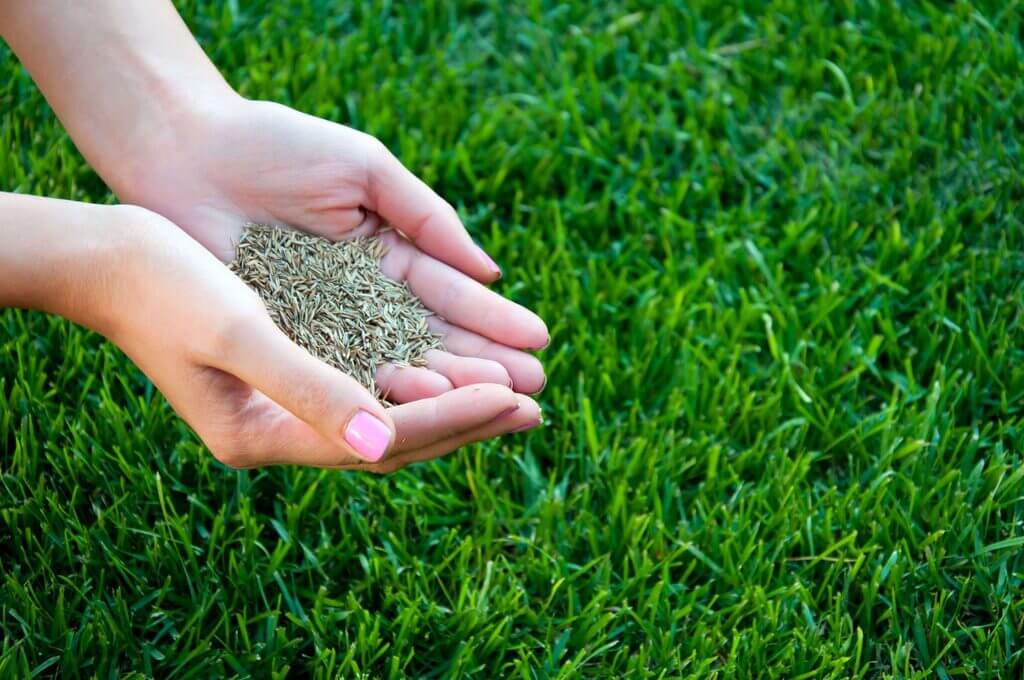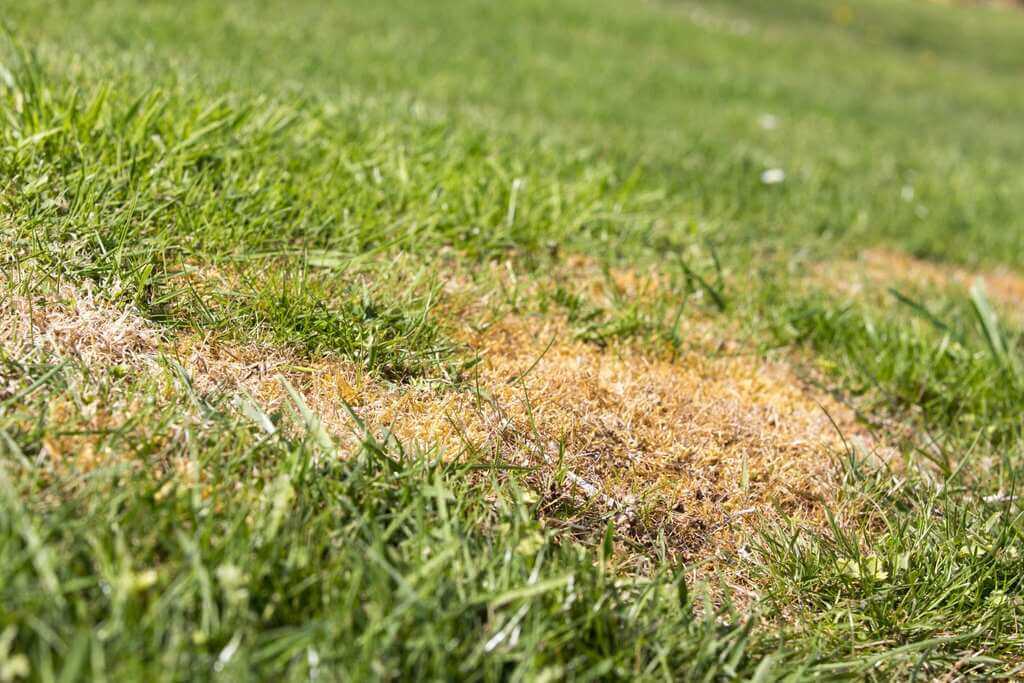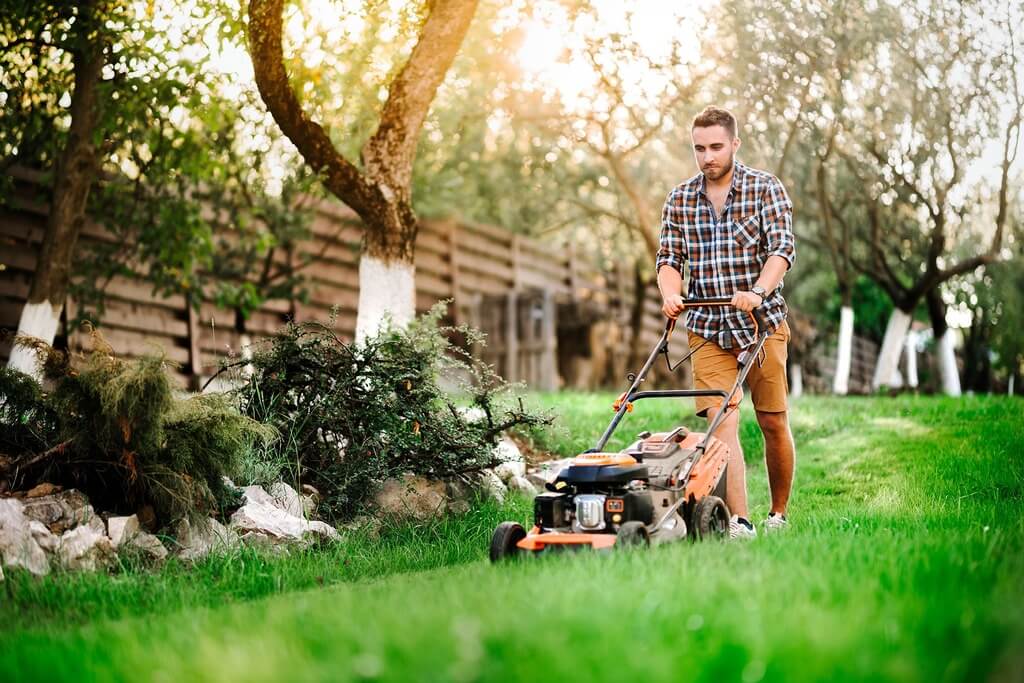When your grass is healthy, lush, and green, you don’t think much about it other than to mow and occasionally water it. Unfortunately, grass can become damaged and diseased quickly. Learning how to diagnose and treat the problem can prevent it from worsening or happening again. Getting to the root of your lawn’s problem lets you quickly get it back to looking healthy and green. Here are eight common causes of lawn damage that will help you kickstart your landscaping diagnostics.
1. Cheap Grass Seed

If you’ve recently reseeded your yard, the type of seed mix could be causing the problem. Cheap grass seed can be several years old, and it could have diseases or fungus on it. The cheap seed also has a lower ratio of actual grass germ to other materials, meaning you’re fighting an uphill battle when it comes to your day-to-day lawn care rituals.
Instead of scraping the bottom of the barrel for questionably-priced seed, choose high-quality grass seed from a trusted, well-reviewed retailer. When you buy from a reputable seller, you can trust that the seed has been cleaned and is fresh. With vetted grass seed, your grass will grow green and lush without weeds and other complications taking root.
2. Too Much Foot Traffic
When your yard has had too much foot traffic, the soil compacts. As the soil compacts and hardens, grassroots struggle to stay healthy. The roots cannot breathe or absorb nutrients and water. Eventually, the grass goes patchy and looks damaged.
Healthy yards need regular aeration. You can do this with spikes you attach to your shoes or an aeration machine resembling a small rototiller. Aeration will open up the soil so that your grassroots can breathe, eat, and drink.
3. Watering Incorrectly

Grass requires regular maintenance, and that includes water. That said, water is a delicate balance for a healthy lawn. If you are overwater or underwater, your yard could look like the sick man of the neighborhood. That’s why it’s critical never to tip the balance in your watering schedule.
If you are overwatering, you’ll be able to see your footprints in the grass. The best time to water is early in the morning so the water can evaporate from the grass. Never water at night because the water does not evaporate and begins to encourage fungus to grow. Underwater grass will turn brown and crunchy, so if it makes noise when you walk over it, reevaluate your watering routine.
4. Lawn Fungus
When your grass develops fungus, it will turn yellow or brown in spotty locations. Some nutrient deficiencies can turn grass brown and yellow, too. If you determine that you have fungus in your yard, you can treat it with a fungicide. Then, take care of your lawn by watering in the morning, cutting it three inches or higher, and dethatching overgrown spots.
5. Temperature Extremes
If you’ve grown a suitable variety of grass for your yard and region, temperature extremes should not affect it. However, with areas of the United States experiencing novel temperatures, grass varieties should struggle with new extreme heat and cold.
Grass does not like excessive heat, so take proactive steps to protect it by applying mulch, like dry grass clippings to reflect sunlight. Water in the morning and use a shade cloth if necessary. To preserve your grass in extreme temperatures, keep it at least three inches tall so the roots can establish deeper into the ground.
6. Insects or Pests

Pests can cause lawn damage both directly and as a side effect. The indirect cause comes from pesticides damaging your lawn, as the products can burn yards and turn grass green or brown.
Insects like grubs and chinch bugs can damage yards, too. Chinch bugs remove water from the grass, causing it to turn yellow and brown. The bugs then rest under wilted patches. You’ll be able to see their red, orange, or black coloring, thanks to their white markings. Removing thatch can prevent chinch bugs from moving in.
Grubs are also highly problematic as they chew on roots and kill your grass. Always let your grass dry before watering it again and choose grub-tolerant grasses. Spreading milky spore powder keeps grubs away. You can check for grubs by shoveling up some damaged grass. If you see ten or more grubs per square foot, you have a problem.
7. Mowing Too Short

Another common problem that can make your lawn look damaged and diseased is how you mow it. Many homeowners want to mow their grass to a short length, around two inches, because they don’t have to mow as often. Unfortunately, roots mimic the size of the blades of grass. So, short grass equals short roots.
When the roots are too short, they cannot reach water and nutrients. Eventually, the lack of nutrients and water harms the blades of grass. The best fix is to mow your grass to a blade length of three inches or more.
8. Pet Waste
Finally, if you have dogs that regularly relieve themselves on your grass, that waste could be killing your lawn. Always pick up any dog droppings and rinse urine right away.
Wrap Up
Learning about the possible causes of lawn damage and disease can help you prevent having more problems in the future. Pay attention to your grass to avoid unsightly bald patches and yellowing.
Explore Further:-

